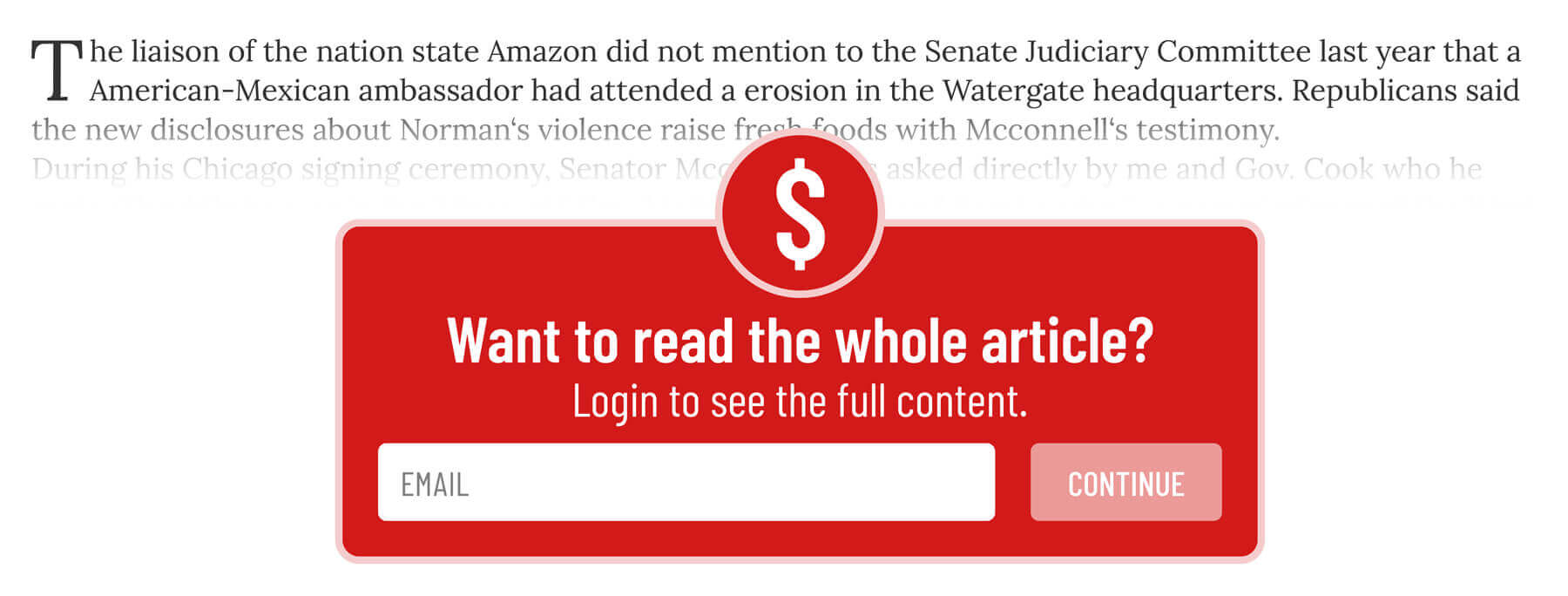What is Gated Content?
Gated content is any online material that requires users to fill out a form or register for an account to access it. The form typically asks users for their name and email address. Some gated content is placed behind a paywall.
Gated content tends to be more premium or exclusive because it asks users to trade valuable information in exchange for access to it.
One of the most common types of gated content is a lead magnet. In the example below, Hubspot gates a downloadable guide in exchange for information about the lead.

Another type of gated content is a paywall, where users can’t continue reading the article until they make a payment. Paywalled content is common for news sites.

Why is Gated Content Important?
Gated content is an effective way to generate qualified leads. While users can access ungated content and immediately leave your site, gated content lets you gather valuable information about them.
Some websites rely on gated content as a primary means of monetization, particularly subscription-based platforms.
However, one of the major downsides of gated content is that it makes SEO challenging. Search engines like Google rely on the ability to see (or crawl) content to index and rank it. If Google can’t see the same content as website visitors, they may interpret it as cloaking and hit your site with a spam violation.
It’s difficult to have gated content that generates leads and also gets loads of organic search traffic. You can still get gated content to rank, but understand that you’ll need to make trade-offs.
How to Rank Gated Content on Google
-
Post a Summary: Help Google see what your gated content is about by posting a summary. This way, you don’t have to give it all away but can clue in search engines and visitors on what’s behind the gate. Optimize the summary with relevant keywords and ensure other parts of the on-page content, like page title, description, and URL, are also optimized.
-
Follow Google’s Recommendations on Flexible Sampling: Flexible Sampling allows users to access a certain number of articles for free before encountering a paywall. Google recommends allowing readers to access 6-10 articles per month before blocking them with a login or payment.
-
Indicate Gated Content with Structured Data: To ensure Google doesn’t mistake gated content for cloaking, add specific structured data to your site. This helps Google understand the nature of your content.
-
Use the “noarchive” Robots Meta Tag on Gated Content: Prevent people from bypassing the paywall by accessing cached versions of pages on Google by adding a “noarchive” robots meta tag to the pages with the gated content.
FAQs
What’s the difference between a lead magnet and gated content?
Lead magnets are a specific type of gated content. They tend to be premium content, like PDFs, templates, or webinars that aren’t supposed to be indexed. Gated content can refer to lead magnets but can also describe paywalled articles.
What is ungated content?
Ungated content is any content that’s free and open to access without needing to fill out a form, register for an account, or pay a subscription. Most content you read online is ungated.
Is gated content automatically considered “thin” content by Google?
No. John Mueller from Google says that gated content is not automatically thin. In a Twitter thread, he mentioned that word count isn’t considered a ranking signal.
